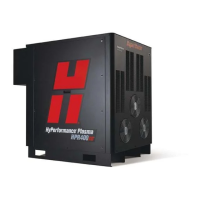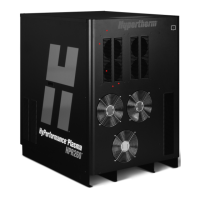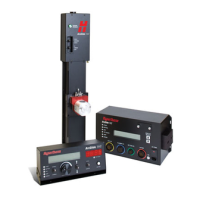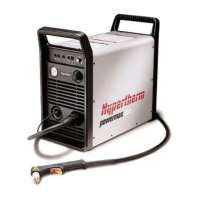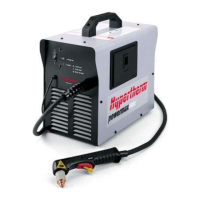Condition Result Cause Solution
Torch rising off
plate when table
starts moving
(Continued)
Faulty voltage
divider
Refer to the cut chart in the Operation section of the manual. Determine the torch-to-
work distance for the material you are cutting. Perform a manual cut (AVC off) at the
height and travel speed indicated in the manual. If using a Command THC, monitor the
actual arc voltage on the pendant (if used) or measure the voltage on the terminal strip
in the plasma interface box (from Electrode to Work). Voltage should be +/-10 VDC
from setting shown in manual. If voltage is low check for gas leaks. If voltage is within
+/-10 VDC from book setting, then perform another manual cut and measure the
divided voltage across pins 16 and 35 on J7 in Plasma Interface Box. The voltage
should be 1/40th of actual arc voltage. If using a THC system other than the Command
THC, refer to manufacturer of the THC system to determine how to test their voltage
divider.
Gas restriction
With inlet pressures set to book values, and gas pressures set according to the cut
charts, the plasma preflow and cut-flow should be as shown in the cut charts. There are
pressure values at the bottom of each cut chart for PG1 and PG2 during cutting. All
pressures should be within +/- 5 psi (+/- 0.3 bar). If one of these pressures is high and
all gas settings are correct, then there is a restriction in the gas system after the Gas
Console. If one of these pressures is low, then there is a leak in the system or
insufficient flow from gas source.
O-ring on the center
shaft on the back of
the torch is not
properly seated
If the torch is not screwed completely onto the torch receptacle, the o-rings on the back
of the torch body will not properly seal gases and coolant when power is applied. As a
result, the force of the coolant leaking around the center shaft of the torch will cause
the o-ring to become dislodged. Refer to the Installation section of this manual for
proper installation of the quick-disconnect torch.
One of the coolant
connectors on the
back of the torch is
damaged
Inspect o-rings on back of the torch for damage. Refer to the Operation section of this
manual to identify coolant connectors.
Water Leaking
out Torch Body
Faulty voltage
divider
Refer to the cut chart in the Operation section of the manual. Determine the torch-to-
work distance for the material you are cutting. Perform a manual cut (AVC off) at the
height and travel speed indicated in the manual. If using a Command THC, monitor the
actual arc voltage on the pendant (if used) or measure the voltage on the terminal strip
in the plasma interface box (from Electrode to Work). Voltage should be +/-10 VDC
from setting shown in the manual. If voltage is high, the problem could be a gas
restriction after the Off-Valve or a faulty torch. If voltage is within +/-10 VDC from book
setting, then perform another manual cut and measure the divided voltage across pins
16 and 35 on J7 in the Plasma Interface Box. The voltage should be 1/40th of actual
arc voltage. If using a THC system other than the Command THC, refer to
manufacturer of THC system to determine how to test their voltage divider.
Torch not properly
seated to torch
receptacle
Torch moves down
toward or into the
plate when table
starts moving
THC not
functioning
properly
(Continued)
MAINTENANCE
5-14 HT4400 Instruction Manual
2
System Troubleshooting - 4 of 4
